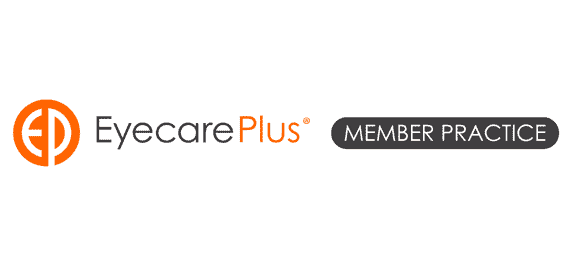Vision in Children: More Than Meets the Eye
At Caloundra Vision, we believe that vision extends beyond the basic ability to see clearly, being more than just 20/20 vision. Our comprehensive eye examinations specific for children evaluate not only eyesight and any potential prescription needs (such as for farsightedness, nearsightedness, or astigmatism), but also eye movement, eye coordination, and focusing abilities. These assessments are vital for understanding the efficiency of our visual system, particularly under high visual demands.
Our thorough vision examinations for children take into account your child’s overall development, health, and lifestyle, as these factors can influence how a child’s vision develops. This approach is equally important for adults experiencing visual efficiency issues.
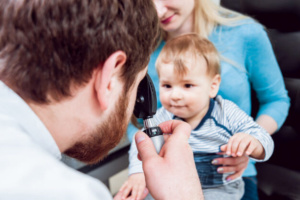
Eye Examinations for Infants, Toddlers, and Preschoolers
Parents often question how we can evaluate the vision of their young children, including infants. Rest assured, we have methods to objectively assess the vision and eye health of young children, even those who are not yet speaking. Early detection and intervention of vision problems are crucial, as these issues can affect overall development.
We aim to make the eye examination a fun experience for your child, filled with engaging games that assess how well their eyes are functioning. Our testing room is equipped with a variety of toys and age-appropriate tests to accommodate even the youngest children.
Preparing for School
Vision accounts for nearly 80% of learning, yet vision problems can be difficult to detect. Many children adapt to their vision conditions, as they don’t know any different. Therefore, an eye test before school is essential to ensure that your child’s visual system is ready to meet the new and increased visual demands of school. Without well developed eyesight, eye alignment and focus skills, energy is directed to the visual system, rather than to the task of learning, so learning can fall behind. Regular children’s vision examinations during school years are also important to keep up with increasing demands.
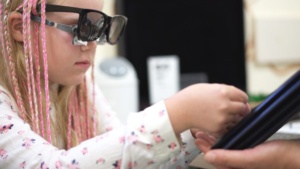
Children’s Vision Problems: Early Detection is Key
Vision is a critical sense that plays a significant role from childhood onwards. In fact, 80% of what children learn in school is visually presented. From infancy, there are important milestones in your child’s vision development. For instance, during the first few months of life, a baby can only focus on close objects and sees only in high contrast colors like black, white, and red. By 6 months of age, your child’s visual acuity should improve significantly, with more accurate color vision and better eye movement and hand-eye coordination skills. To ensure that your child’s eyes are functioning properly and working together during these early formative years, schedule their first eye exam at 4 years of age, or earlier if you suspect any issues.
Early Eye Exams
Early eye exams are crucial because children need the following basic visual skills for learning:
- Near vision
- Distance vision
- Binocular coordination
- Eye movement skills
- Focusing skills
- Peripheral awareness
- Hand-eye coordination
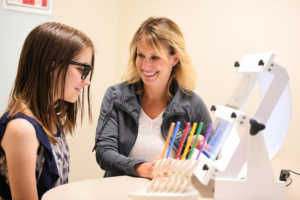
Some parents are surprised to learn that preschool-age children do not need to know their letters to undergo certain eye tests, even when they are too young or too shy to verbalize.
A child who struggles to see print or view a blackboard can become easily frustrated, leading to poor academic performance. Some vision problems, such as lazy eye, are best treated if they are detected and corrected as early as possible while the child’s vision system is still developing.
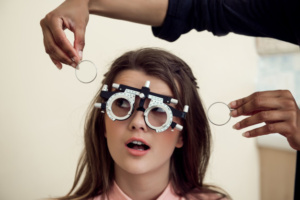
Amblyopia & Strabismus (Lazy & Turned Eyes)
Strabismus (eye turn) and Amblyopia (lazy eye) are the most common disorders of binocular vision. These conditions can develop when the brain has difficulty using the two eyes together effectively. In some cases, this can be due to a problem with an eye muscle, but more often it is due to a neurological difficulty where the brain cannot fuse together the two images from each eye. One eye usually becomes much weaker than the other, failing to achieve normal eyesight even with prescription glasses or contact lenses, as the brain finds it easier to just use one eye than two together.
Amblyopia begins during infancy and early childhood. In most cases, only one eye is affected. But in some cases, reduced visual acuity can occur in both eyes.
If lazy eye is detected early in life and promptly treated, the prognosis for better vision development is easier. If left untreated, lazy eye can cause severe visual disability in the affected eye, including legal blindness.

